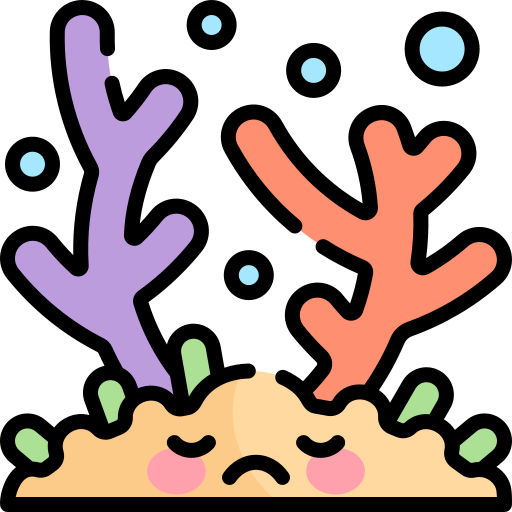Just to keep things going - here's an excerpt from an article by Rob Toonen (full article at http://www.reefs.org/library/article/r_toonen8.html )
"First, although the anemones that host clownfishes typically harbor photosynthetic algal symbionts (zooxanthellae, zoochlorellae, etc.), and algal production in intense light appears to be the major source of energy for anemones, all anemones require some animal prey for long-term survival . The shape and behavior of tropical host anemones both serve to increase the amount of area available for "harvesting" sunlight, and with few exceptions, intense lighting (typical of coral reef tanks) is required for anemones gain sufficient energy for survival. Some species are found exclusively in very shallow water and only in areas that are directly exposed tp sunlight (e.g., Stichodactyla gigantea), while others can sometimes be found in shaded areas, or even deep water environments (e.g., Entacmaea quadricolor). Depending on the habitat from which the animals were collected, very different levels of lighting may be required to maintain them successfully. Even in tanks with intense metal halide lighting in which stony corals are thriving, anemones are often reported to bleach and wither -- whether this is a result of too much light for a low-light adapted animal or a sign of other stressors is unknown. Furthermore, despite the fact that anemones look to be helpless predators just waiting for something to blunder into their waiting tentacles, most species appear to be prey specialists, and require both specific mechanical and chemical cues for the discharge of their cnidae (specialized stinging cells that anemones use to capture their prey). The cues required and the venom that is associated with these stinging cells both differ by species, and -- just to make things more complicated -- also differ depending on the condition and hunger of the animal tested. To date, there has been no cnidarian (the group to which anemones and corals belong) discovered which is capable of obtaining 100% of their nutritional requirements from light alone. All cnidarians (the group which includes hard and soft corals, anemones, gorgonians, mushrooms, jellyfish, hydroids and the like) require food to survive, and if the animal has specific feeding or prey requirements, it makes the job of maintaining them in an aquarium that much more difficult."
Emphasis added - Sorry it was so long! (hey, I didn't want to just quote the part that supported my point of view while leaving out information about the necessity of light....) I guess this aritcle supports the need for both, not either/or.

Kevin
[ November 07, 2001: Message edited by: Anemone ]
[ November 07, 2001: Message edited by: Anemone ]</p>
"First, although the anemones that host clownfishes typically harbor photosynthetic algal symbionts (zooxanthellae, zoochlorellae, etc.), and algal production in intense light appears to be the major source of energy for anemones, all anemones require some animal prey for long-term survival . The shape and behavior of tropical host anemones both serve to increase the amount of area available for "harvesting" sunlight, and with few exceptions, intense lighting (typical of coral reef tanks) is required for anemones gain sufficient energy for survival. Some species are found exclusively in very shallow water and only in areas that are directly exposed tp sunlight (e.g., Stichodactyla gigantea), while others can sometimes be found in shaded areas, or even deep water environments (e.g., Entacmaea quadricolor). Depending on the habitat from which the animals were collected, very different levels of lighting may be required to maintain them successfully. Even in tanks with intense metal halide lighting in which stony corals are thriving, anemones are often reported to bleach and wither -- whether this is a result of too much light for a low-light adapted animal or a sign of other stressors is unknown. Furthermore, despite the fact that anemones look to be helpless predators just waiting for something to blunder into their waiting tentacles, most species appear to be prey specialists, and require both specific mechanical and chemical cues for the discharge of their cnidae (specialized stinging cells that anemones use to capture their prey). The cues required and the venom that is associated with these stinging cells both differ by species, and -- just to make things more complicated -- also differ depending on the condition and hunger of the animal tested. To date, there has been no cnidarian (the group to which anemones and corals belong) discovered which is capable of obtaining 100% of their nutritional requirements from light alone. All cnidarians (the group which includes hard and soft corals, anemones, gorgonians, mushrooms, jellyfish, hydroids and the like) require food to survive, and if the animal has specific feeding or prey requirements, it makes the job of maintaining them in an aquarium that much more difficult."
Emphasis added - Sorry it was so long! (hey, I didn't want to just quote the part that supported my point of view while leaving out information about the necessity of light....) I guess this aritcle supports the need for both, not either/or.
Kevin
[ November 07, 2001: Message edited by: Anemone ]
[ November 07, 2001: Message edited by: Anemone ]</p>





